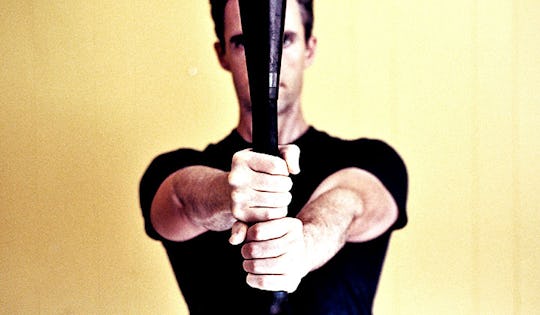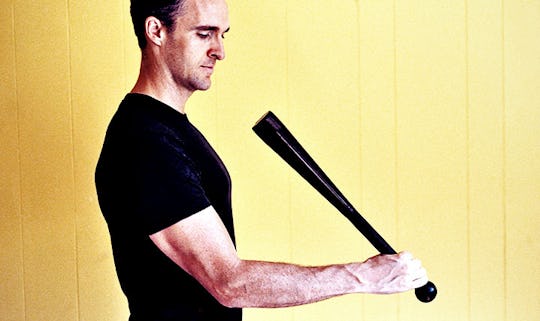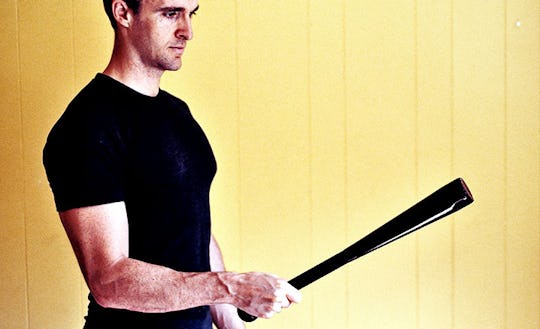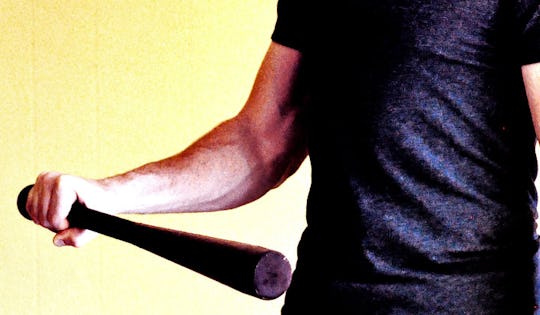You are passionate about movement. You are ardent about exploration. You are thirsty for knowledge. Energized at the thought of growth. Fervent about striving for your peak performance. For you, all this is not simply “exercise”. It is a channel for feeding your soul.Yet many around you don’t seem to understand. Either from general ignorance or from a deep seeded fear. Fear of the unknown, the hard work, the ‘pain’ and discomfort; fear of facing their vulnerability and perceived weakness; fear of facing their own mighty potential. And so they counter your passion with ‘reality’.
“You’re spending way too much time with this. It’s obsessive.”
“What about your real responsibilities?”
“You don’t get to keep this body forever you know. You will get old and in the end won’t be able to do all this anyway.”
“There is more to life than all this exercise stuff.”
“Come on. Get a grip!”
And you know exactly where you stand in the spectrum when all you heard of the above reasoning is: Get a grip! And you think to yourself, “Yeah… yeah, they are totally right! I need to get a way better GRIP!” Then a list of all the tools and exercises available to you start scrolling down like the end credits to a movie, as you start identifying what will work best to improve your overall functional grip strength.
Why Choose the Steel Club for Grip Strength
Steel Clubs are one of the best implements you could possibly incorporate into your training and practice for improving overall functional grip strength. Our hands are immensely dextrous. They are meant to move fluidly and with fine articulation.
That articulation under load requires a whole other degree of strength, mobility and endurance. That is why for many of us when we first begin utilizing Steel Clubs, even if we are thought to have above average grip strength, we are challenged.
But if we allow ourselves to access those deeper recesses and capacities of our grip functionality through the dynamic strength that training with Steel Clubs provides, we exponentially increase the overall expression and applicability. Not only in our movement practice and training, but in our day to day life as well.
3 Reasons You Should Use the Steel Club for Grip Strength
1. The Push/Pull Effect Though the Hand
With the positioning of the hand on the Steel Club, the majority of movements performed cause a force that is either pushing or pulling THROUGH the grip of the hand, relying solely on muscular activation to keep it from flying out or falling through. As opposed to the force that is being applied having the option to push AGAINST the hand and supporting bone structure (as we have when working with dumbbells, barbells, kettle bells, etc.).
2. The Constant Tension Throughout an Exercise
Because the center of mass is offset to such an extreme, the relationship of the Steel Club to the hand throughout the duration of individual movements changes constantly. This doesn’t allow for constant, uniform pressure of the grip to the tool, with a single definitive transition.It requires a sensitivity, awareness and suppleness that allows for a shift in selective tension sequentially by minute degrees. The articulation being asked for by the Steel Club requires a grip that is ALIVE!
3. The Dynamic Rotation Effect Created
Due to the dynamic effect of the Steel Club on our hand and grip throughout movement, it also provides on a regular basis a range of motion that is most often missing in grip training: Rotation. Without rotation, we significantly diminish the connectivity of that strong grip to our elbow, thus limiting connectivity to our shoulder.
Limiting that connectivity and eventual lack of mobility, that the elbow and shoulder are meant to move in, now reduces the effective strength being accessed and converted into the expression of the overall movement which it serves.
The beautiful thing is, while it can certainly be used for supplemental grip strength development, you will gain those same benefits when utilizing the Steel Clubs as a primary tool, while you still develop the broader movement and performance attributes you are striving for.
Steel Club “Grip Strength Ringer” Workout
To get started, the following is a simple, yet very effective introduction to the key aspects described in #2 and #3: Selective Tension & Rotation. It is done under control, giving you essentially a “slow motion” perspective of what is happening internally in your hand, wrist and forearm (which are the main components our “grip” is comprised of), once you are performing dynamic Steel Cub movements under speed and power.
It can be used as a supplemental functional grip strength routine or as an initial familiarization exploration. You do not require a lot of weight! And I can’t stress this enough. It may not feel like much at first, but you will be feeling this through out the day, long after you have finished. The weight will differentiate slightly depending on the length of your Steel Club (longer will feel heavier).
Weight: Start with 5 lbs. If your hand, wrist and forearm feel fine and your hand isn’t… singing, too intensely (you’ll know what I mean), go ahead and move up to 10 lbs. That is a big jump, so you can move your hand closer to the center of mass to “lighten” the load.
Do this session between 2-4 times a week, preferably at the end of your main training session or on its own at another time in the day. There are many variations on this, with ways of making it much more difficult, but focus on getting this solid, foundation of exploration in first. The Twists and Tips are all done at Order position (elbow at 90 degree angle with a solid shoulder pack).
Top 5 Steel Club Grip Strength Exercises
#1. Backward Lever Tip – 3 rounds x 3 reps
With the Backward Lever Tip, allow for the articulation of the fingers. Maintain control, but let them be moved by the shift of the center of mass from back to front.
#2. Forward Lever Tip – 3 rounds x 3 reps
Again, just like the Backward Lever Tip, allow for the articulation of the fingers. Maintain control, but let them be moved by the shift of the center of mass from back to front
#3. Inside Lever Twist – 3 rounds x 3 reps
With the Inside Lever Twist do the opposite of the Levers. Work to counteract the Steel Club’s efforts to pull your fingers out of an aligned, even, neutral grip. Maintain a flat plane between back hand, wrist and forearm. The rotation twist comes in the forearm.
#4. Outside Lever Twist – 3 rounds x 3 reps
Just like the Inside Lever Twist, do the opposite of the Lever. Work to counteract the Steel Club’s efforts to pull your fingers out of an aligned, even, neutral grip. Maintain a flat plane between back hand, wrist and forearm. The rotation twist comes in the forearm.
#5. Parry Cast – 3 rounds x 3 reps
With the Parry Cast, keep the bottom of the Steel Club parallel with the ground. We’re using the gravitational pull of the Steel Club to support us in the movement that, while still challenging the grip, serves as a major mobilizing tool.
And as you come around and cross the shoulder to come back to front position, draw that elbow in to your center line and allow the Steel Club to travel the natural line of tension that your structure from shoulder to elbow to wrist currently holds.
It will continue to release with time.If you have a heavier weight to work with (10-15 lbs is a good place to start), use this for your Parry Cast. Too light and you’ll lose out on the benefit.
1 min rest between sets. Perform all the reps for each movement before moving on to the next. Come back to neutral Order position before moving on to the next movement. All movements are done without rest until the end of the set.
Additional Notes:
As you get more comfortable with them, increase reps up to 5. Then move on to doing one rep for all the movements consecutively and repeat that for 3-5 rounds to complete the set. And that’s that. Take the… generous… advice from others to, you know, Get a Grip! And, with the versatile and unconventional Steel Club, expand to greater capacity your dynamically, functional grip strength.
It will only continue to feed your passion for life and support the expression of your soul.
Dare To Evolve.







)





